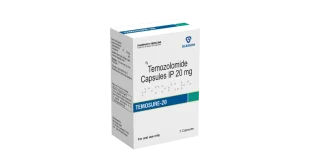In the dynamic and ever-evolving landscape of scientific research, few areas hold as much potential as the study of natural extract peptides. These short chains of amino acids, derived from sources like plants, marine collagen, and biofermentation, are gaining attention for their potential to address a range of health and cosmetic challenges. From skin and hair applications to nutraceuticals and therapeutics, natural extract peptides offer a versatile and promising tool for researchers across disciplines.
What are Natural Extract Peptides?
At their core, peptides are simply short chains of amino acids. In the context of research, natural extract peptides are those derived from non-synthetic sources like plants, algae, or biofermented microorganisms. These peptides are often smaller and more bioavailable than those found in whole proteins, making them ideal for both in vitro and in vivo studies.
Peptides in Cosmetic Research: A Focus on Skin and Hair
One of the most active areas of peptide research is in the realm of cosmetics. Peptides have been shown to have a profound impact on skin health and appearance, making them a key target for researchers seeking to develop novel skincare and haircare solutions. By stimulating collagen production, peptides can help combat signs of aging like wrinkles and loss of elasticity. Other peptides may have a role in enhancing skin brightness, reducing inflammation, or promoting a more even skin tone.
Hair is another area where peptide research is yielding promising results. Certain peptides may help strengthen the hair shaft, reduce breakage, and promote a fuller, healthier appearance. Other peptides could have a role in addressing scalp issues like dandruff or irritation. As consumers increasingly seek out effective yet gentle haircare solutions, the potential of peptides is vast.
Peptides in Nutraceutical and Therapeutic Research
Beyond cosmetics, natural extract peptides are also being explored for their potential as nutraceuticals and therapeutics. Some peptides may have a role in supporting joint health, muscle function, and recovery after exercise, making them a promising area of study for sports medicine researchers. Other peptides could help promote healthy weight management, immune function, or even cognitive performance.
One of the most exciting areas of peptide research is in their potential to support gut health. The gut and skin are intimately connected, and an imbalance of the gut microbiome (dysbiosis) can lead to a range of health issues. Certain peptides may help modulate the gut microbiome, promoting a healthy balance of beneficial bacteria and supporting both gut and overall well-being.
Challenges and Opportunities in Peptide Research
While the potential of natural extract peptides is undeniable, researchers face several challenges in fully realizing this potential. One key hurdle is in the sourcing and production of high-quality peptide extracts. Variability can exist between different batches and suppliers, which can impact the consistency and reliability of research results. Standardization of peptide extraction and characterization methods is essential to advance the field.
Another challenge lies in the bioavailability and stability of peptides. As peptides are sensitive to heat, light, and enzymes, careful formulation and delivery strategies are needed to ensure they remain intact and active. Researchers are actively exploring encapsulation, liposomal delivery, and other techniques to enhance peptide stability and absorption.
Despite these challenges, the opportunities presented by natural extract peptides are too great to ignore. As researchers continue to innovate and overcome hurdles, we can expect to see these powerful molecules make a significant impact across a range of fields. From cosmetics to therapeutics, natural extract peptides offer a versatile tool with the potential to transform our approach to health and well-being.
Application of biomimetic hydrogels in cartilage tissue engineering
Tissue engineering is an interdisciplinary field that combines materials science and cell biology to repair biological tissues that are difficult to regenerate. Once a cartilage defect occurs, due to its complex structure, and lack of blood vessels, nerves, and lymphatic vessels, tissue self-limitation is poor, especially full-thickness cartilage defects that are difficult to repair and regenerate. Therefore, tissue engineering has become an effective method to repair cartilage defects (especially full-thickness cartilage defects): artificial materials are developed to simulate the mechanical properties and biological properties of natural osteocartilage and used to implant into the defect to replace its biological function.
Scaffolds used in cartilage regeneration can be divided into sponges, membranes, nonwovens, non-injectable, and injectable hydrogels. Each of these scaffold materials has its own uses and characteristics. Sponge scaffolds are conducive to cell seeding, but their structure is single; membrane-like Scaffolds are suitable for fine repairs, but they have high process requirements and high costs and are inconvenient to transport and store. Non-woven scaffolds have high toughness and are suitable for cartilage surface defects. Hydrogels are hydrophilic polymers with excellent mechanical and biological properties that are critical for modeling cartilage with high water content. In addition, hydrogels are easy to store and carry, which has high application prospects.
About the Author
Collected by Matexcel, a biotechnology company specialized in material science. The company provides a wide list or natural extract peptide for research use. Featured products include: Marine Fish Skin Oligopeptide Powder, Salmon Cartilage Peptide Powder, Oyster Oligopeptide Powder. Sea Cucumber Oligopeptide Powder, Crocodile Peptide Powder, Antarctic Krill Peptide Powder… As an innovative leader, we specialize in the production and development of high-performance materials including chitosan, hyaluronic acid, graphene. Natural extract materials, natural food additives, hydroxyapatite, collagen, bioactive ceramic, metal powder. Alloy nanoparticle, biodegradable & tissue engineering materials, and much more. Our broad array of cutting-edge products is designed to meet the intricate requirements of various industries such as biotechnology, pharmaceuticals, cosmetics, food, and materials science.
As we continue to grow and expand our horizons, we invite you to join us on this exciting journey. Whether you are looking for pioneering materials to drive your projects or specialized services to support your innovations. Matexcel is your ideal partner. Together, we can create a brighter, more technologically advanced, and sustainable future.







